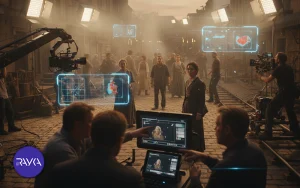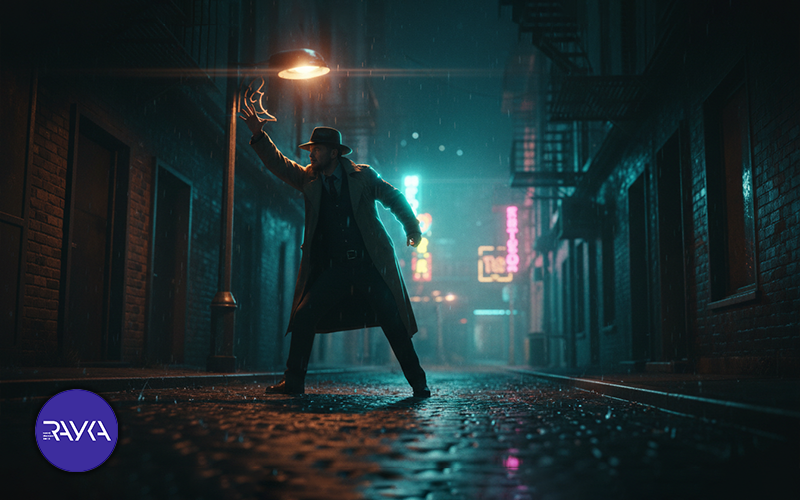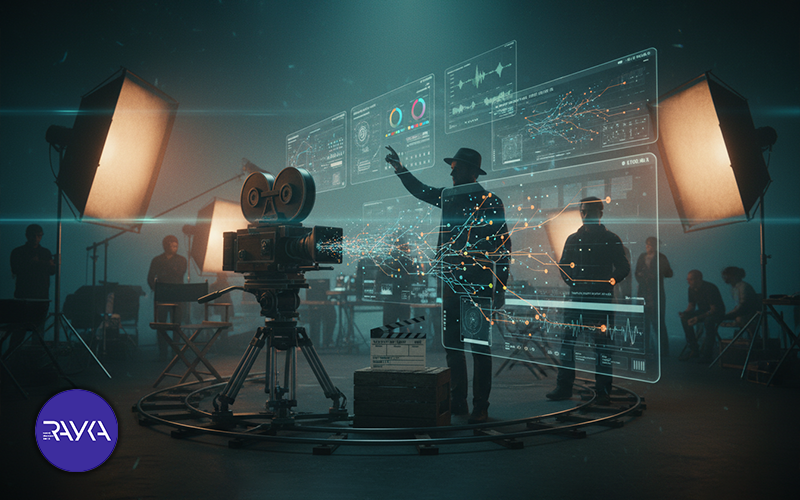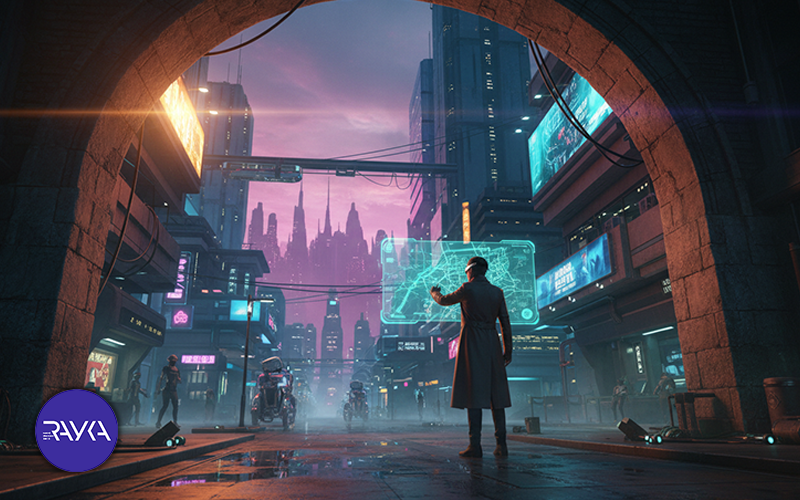
Cinematic composition; also known as visual composition or mise-en-scène; is one of the most essential elements of filmmaking. It shapes how the audience perceives emotion, narrative, and space within a scene. In recent years, Artificial Intelligence (AI) has emerged as a powerful tool that not only assists filmmakers but also revolutionizes how composition is designed, refined, and executed.
Today, AI is not just an operational assistant; it is a creative collaborator capable of analyzing classical film language, predicting visual patterns, and enhancing artistic decisions. As a result, AI-driven composition has earned recognition across the global film industry, becoming a credible and innovative approach to visual storytelling.
In this article, we explore how AI contributes to cinematic composition, the principles it relies on, and why it is becoming an accepted standard in world cinema.
Composition refers to the arrangement of visual elements within a frame; actors, props, lighting, camera angle, and movement. It determines how the audience’s eye travels across the screen and how emotion is communicated. Classic composition techniques include:
With AI, these rules are not only analyzed but dynamically optimized for each shot.
AI can instantly analyze a frame based on:
Using trained models based on thousands of award-winning films, AI suggests optimal framing, making scenes visually coherent and emotionally effective.
AI technologies can replicate or blend the composition styles of legendary directors such as:
This enables filmmakers to craft visuals aligned with internationally recognized cinematic aesthetics.
With AI-supported tools, directors and cinematographers can receive instant feedback on:
This helps productions maintain consistency and avoid costly post-production corrections.
AI can generate highly detailed storyboards using:
These storyboards follow composition rules automatically, saving time and ensuring that every shot matches the film’s visual identity.
AI can predict how audiences might emotionally engage with certain compositions.
For example:
This prediction allows filmmakers to choose compositions with intentional emotional impact.
Maintaining consistent color tones, framing, and visual rhythm is a challenge in long productions.
AI tools analyze:
and ensure that every shot supports the film’s overarching visual identity.

AI aligns with the visual standards admired in international film festivals and cinematic institutions because it:
Filmmakers are not replacing human creativity with machines—AI simply extends their visual intelligence, allowing them to achieve higher levels of precision, consistency, and creativity.
Despite technological advances, AI does not override the human eye or artistic intuition.
Instead, it functions as:
The combination of human cinematic experience and AI-powered analysis results in stronger visual narratives and more impactful composition—aligning with the standards of global cinema.
In today’s world of cinema and visual content production, composition; or the spatial arrangement of visual elements; is one of the most essential foundations of cinematic storytelling. Composition not only enhances the aesthetic quality of a scene but also directly communicates emotion, narrative intention, and the underlying message of a film.
At Rayka, the team has successfully harnessed the power of artificial intelligence to pioneer innovative and cinematic visual compositions while staying faithful to professional film language.
At Rayka, artificial intelligence is viewed as a powerful analytical and optimization tool, not a substitute for human artistic judgment.
Our creative decisions are made by a team of professionals with rich backgrounds in:
AI serves as an intelligent assistant, but the final decisions—camera angles, lighting schemes, visual balance, contrast, and the arrangement of elements inside the frame—are always made by experienced human artists.
This hybrid approach ensures that technology amplifies creativity rather than replacing it. AI speeds up the workflow and provides analytical insights, while the trained cinematic eye of human creators preserves emotional depth, meaning, and artistic coherence.

One of Rayka’s greatest strengths lies in the integration of human cinematic experience with computational intelligence.
While algorithms can analyze thousands of visual references, framing styles, and camera angles, the final choice of composition—aligned with the narrative, emotion, and intent of the project—is made by Rayka’s creative team.
This guarantees that every final output:
This human–AI synergy reflects Rayka’s commitment to producing visuals that are both technologically advanced and artistically meaningful.
With a strong focus on AI-generated advertising teasers, Rayka has developed a unique visual language that captures attention within seconds.
Every frame produced is the result of:
This process ensures that AI does not merely generate content but supports the creation of visually engaging, story-driven compositions tailored for digital platforms and brand communication.
Since 2021, with the emergence of advanced graphics and visual effects technologies, Rayka has been able to professionally blend real-world footage with AI-generated imagery.
In this hybrid cinematic approach:
The outcome is a new category of visual storytelling—immersive, refined, and emotionally engaging.
This achievement demonstrates that at Rayka, artificial intelligence is never a replacement for human creativity. Instead, it serves as a catalyst that enhances artistic vision and elevates the final cinematic experience.

AI-driven composition is more than a trend—it is a new creative methodology embraced by filmmakers worldwide. By combining classical cinematic principles with advanced machine learning, AI enhances framing, emotion, rhythm, and visual storytelling. As a result, it elevates film aesthetics while empowering directors, cinematographers, and editors to push the boundaries of modern cinema.
In the future, the fusion of human creativity and artificial intelligence will continue to redefine cinematic language, shaping a new generation of films that are visually richer, emotionally deeper, and universally resonant.